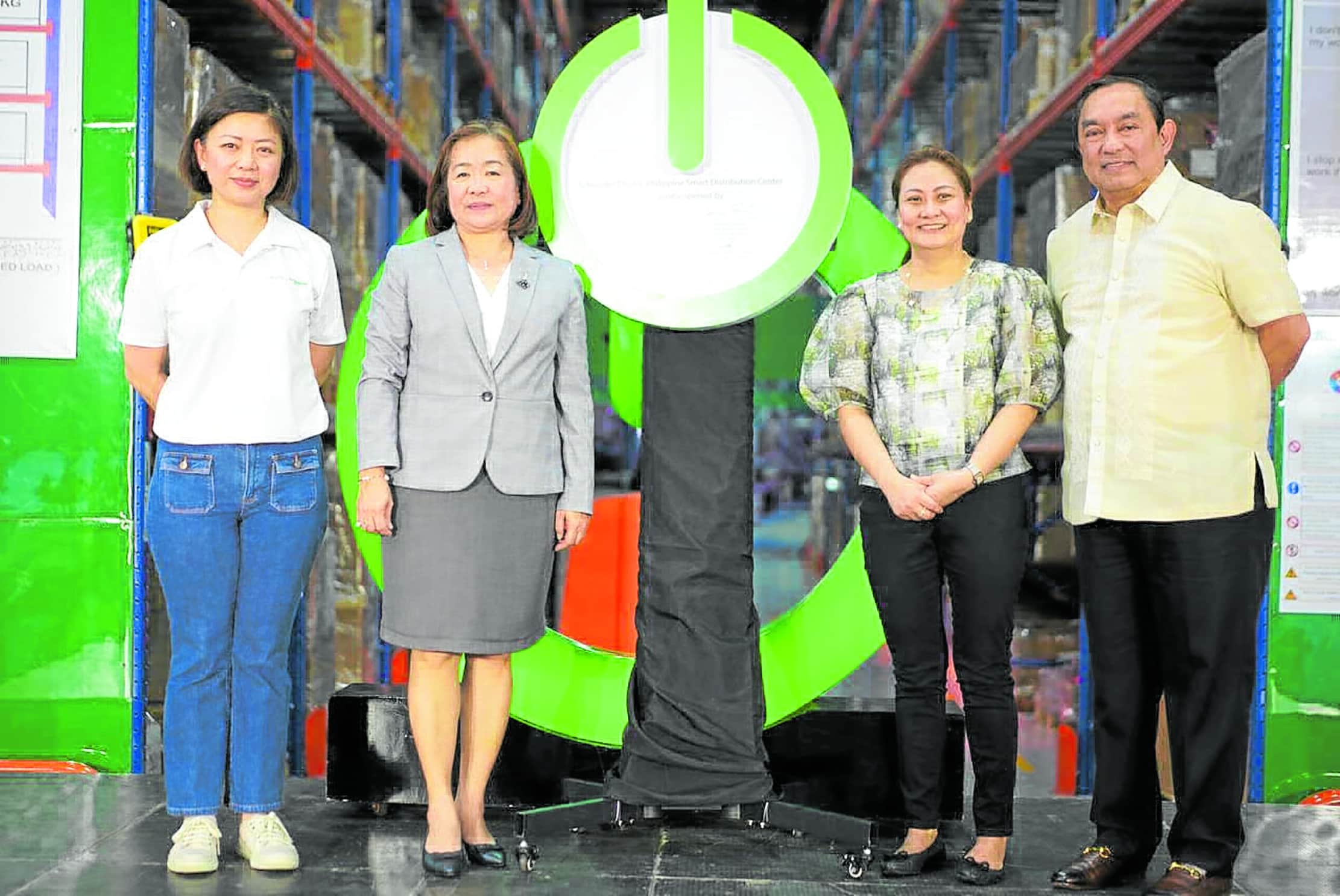Sustainability–this electric company’s bottom line and proposition

(From left) Ireen Catane, country president, Schneider Electric Philippines; Vivian Santos, deputy director general of operations, Philippine Economic Zone Authority; Joanne Michelle “Bamm” Gonzales, vice mayor of Rosario, Cavite; and Rizalino Jose Torralba, Bureau of Customs district collector, Port of Manila, visit the Cavite Smart Distribution Center, one of Schneider Electric’s main distribution centers in Asia-Pacific
and among 17 others in the world. —Contributed photos
MANILA, Philippines — Far too many companies embrace sustainability either because they are compelled to do so by their regulators, or their potential partners and buyers demand it because they want the services and products that they patronize to align with their own values on protecting the environment.
Thus sustainability—largely defined as taking only so much from nature that can be replenished—is relegated to a corporate social responsibility concept.
But not so for French multinational energy management and industrial automation firm Schneider Electric.
READ: Investing in sustainability
For the 188-year-old global industrial technology leader with world-leading expertise in electrification, automation, and digitization, sustainability is its reason for being, indeed what determines its bottom line at the end of every fiscal year.
Thus says Chris Leong, Schneider’s global chief marketing officer, who was in the Philippines recently from her office in Hong Kong to discuss how Schneider was able to integrate sustainability into its business operations and its commitment to specific environmental, social, and governance (ESG) goals.

The MasterPacT MTZ Active is an air circuit breaker that enables real-time power monitoring and measurement to accelerate decarbonization among industries.
Five megatrends
Leong shared that Schneider is guided by five megatrends, first of which is the struggle to meet the global commitment to limit global warming to 1.5 degrees over the level during the industrial revolution of the 1800s. It had been determined under the Paris agreement that going beyond this limit will be catastrophic especially for countries like the Philippines, which, according to the latest World Bank report, is the most at risk to natural disasters.
Another megatrend is energy transition, or the shift from traditional fossil-fuel based power sources to renewables.
Discussions on energy transition, however, have been skewed toward the supply side, which means the need to ramp up the installation of renewable energy sources such as solar or wind plants to add to the capacity.
Not enough attention has been placed on the demand side, which covers how to reduce the need or consumption of electricity to ease the pressure on the grid and reduce the need to put up additional power sources.
This is where Schneider Electric aims to make a difference, given its purpose to “create impact by empowering all to make the most of our energy and resources, bridging progress and sustainability.”
Schneider Electric, she said, walks the talk by retrofitting its own factories to make them more efficient, and it can deploy the same suite of solutions to help other companies make their factories or offices more economical, thus making the most of the energy that they consume.
Another megatrend is digitization and artificial intelligence (AI). Leong underscored that we are all just seeing the beginning of AI.
More applications will be developed around the world to the point that the world will need as much as 4.2 times more electricity to power AI and then the data centers—essentially servers—that will store all the data to be produced and then processed.
Two roles
“We power one in two data centers globally. It is an honor, privilege, and responsibility to make data centers more environment-friendly,” she said, “This is not about hugging trees. It makes business sense to make them much more efficient.”
Leong said she sees Schneider Electric performing two roles—one is as a sustainability practitioner, which means setting and then achieving targets to reduce its own carbon footprint, and the other as a sustainability manufacturer, and also a provider of technology solutions so that others can achieve their own targets.
The first step in helping customers achieve their sustainability goals through power efficiency is by auditing their current operations to gather baseline data. From there, Schneider sits down with the client to draw up a road map of how they can achieve their set targets, such as reducing their electricity consumption or adding more capacity without requiring more power.
Then Schneider helps them digitize so that all relevant data can be connected to a central depository and then processed to see where efficiencies can be unlocked.
Lastly, it helps companies decarbonize, or reduce their carbon footprint, through Schneider hardware, which ranges from surge protectors to lighting fixtures, and the eco-structure software that enables companies to connect all of their assets so they can make their energy usage visible, and through which they will be able to monitor and manage their energy use and thus contribute to their own sustainability goals.
All these interventions combined can help large power users, from data centers to critical buildings such as hospitals and schools to the manufacturing and infrastructure sectors such as utilities, reduce their energy consumption.
That is the proposition it offers to important and growing markets such as the Philippines, which needs all the help it can get to make the most of the costly power it consumes.
